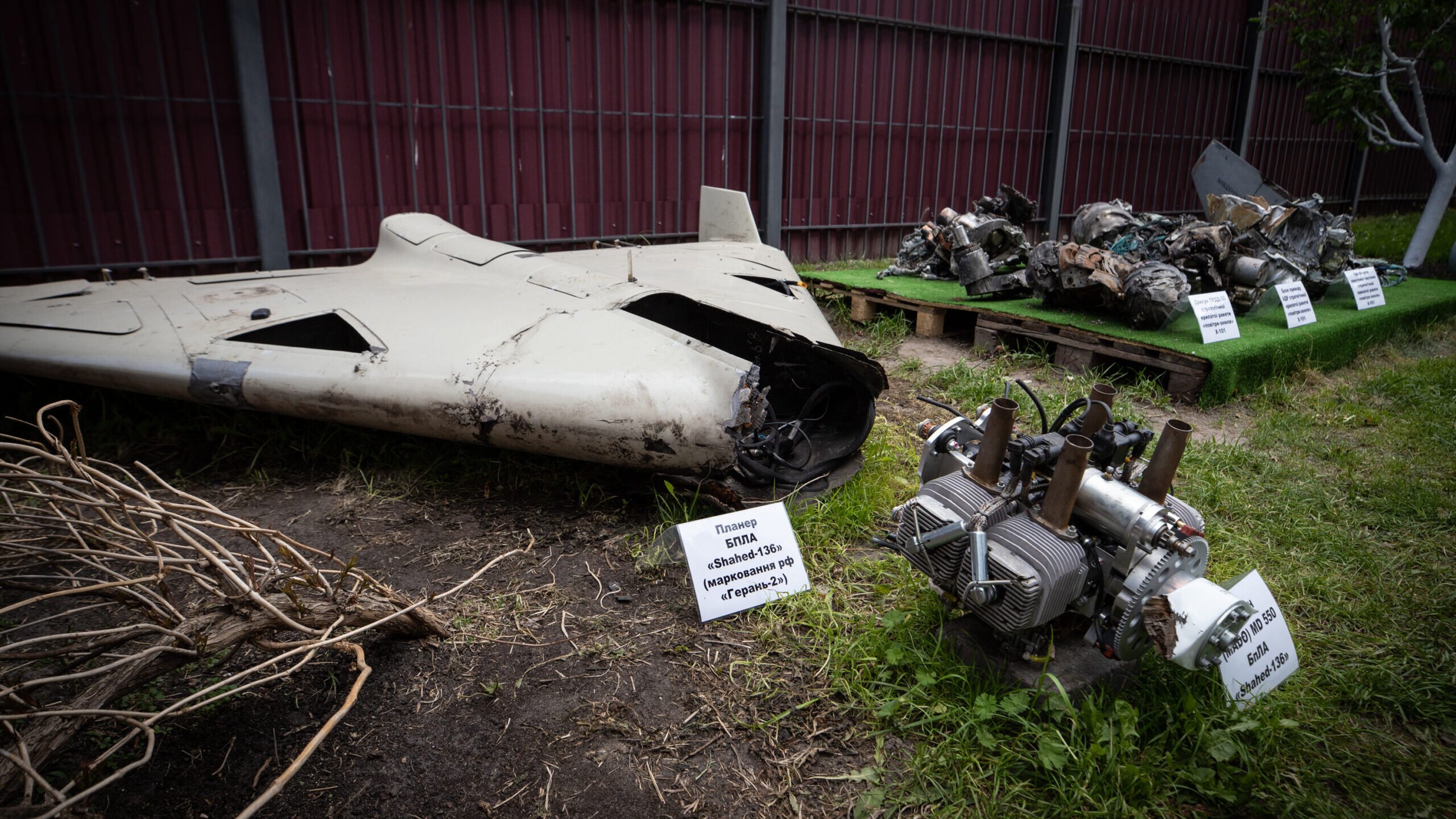ASHLEY ROQUE

WASHINGTON —The Russian military’s use of one-way attack drones, like Iranian Shahed-136s, against Ukrainian targets has prompted the Pentagon to ramp up its hunt for kinetic and high-powered microwave systems to down them before they can do damage, according to a US Army official.
“The threat is always going to evolve. We actually see this every day when we watch what’s happening in Ukraine and Israel and in other areas,” said Col. Michael Parent, the lead for the Counter-small Unmanned Aircraft Systems (C-sUAS) group within the Army’s Rapid Capabilities and Critical Technologies Office (RCCTO). “So that threat that’s evolving, will always be a challenge. And it’ll be a challenge for kinetic as well as [high-powered microwave], as well as a high-energy laser and any other effector, as well as sensors.”
To wit, C-sUAS were the stars of the show at Yuma Proving Ground last month as the Army tested out five companies’ solutions against single, group 3 (up to 1,320 pounds) one-way attack unmanned aerial systems, also known as suicide drones. It was the second demo in a row against such a threat set. But this time the service tested out new capabilities against threats traveling at a slant range of four kilometers or greater instead of at a slant range of two kilometers or greater, Parent told reporters today.
In the kinetic category this time around, Thales brought its Lightweight Multi-role Missile (LMM) that is a tripod that can be mounted on different platforms and fires laser guided missile. A proximity fuse on the missile goes off as it approaches the target. Three companies — Invariant, MSI Defense, and the Science Applications International Corporation — also showed off different ways to launch Advanced Precision Kill Weapons System (APKWS) guided rockets at large, one-way attack drones.
Unlike the previous event in the January-February timeframe, the service this time also looked at high-powered microwaves (HPM), specifically, Lockheed Martin’s Mobile Radio Frequency-Integrated UAS Suppressor (MORFIUS). That system is a tube-launched, fixed-wing UAS of its own that flies close to the targeted UAS and emits HPM pulses to down the aircraft.
While the Army office, along with the Pentagon’s Joint Counter-Small Unmanned Aircraft Systems Office (JCO), are still evaluating the findings, Parent said the team already has identified several items that need to be addressed. Broadly speaking on the APKWS candidates, he said they did “quite well” and it’s now about maturing the systems. For MORFIUS, however, the challenge is distance and closing the gap between the microwave and its target.
It is unclear if or when any of these candidates will be fielded, but the demonstration is part of the office’s larger mandate to help evaluate cUAS options for the services.
The urgency for such a capability was clear at the beginning of the year, when Parent said his office was told they needed to identify cUAS systems that could take on two kilometer slant range targets and be fielding in 30 to 90 days — the blink of an eye in acquisition time.
“In that case, we were given a very short notice request to conduct the demonstration in the January timeframe to help out our foreign partners,” Parent said. By April, the Pentagon announced it was sending “10 mobile c-UAS laser-guided rocket systems” to Ukraine, a direct result of that earlier testing, Parent added.
No comments:
Post a Comment